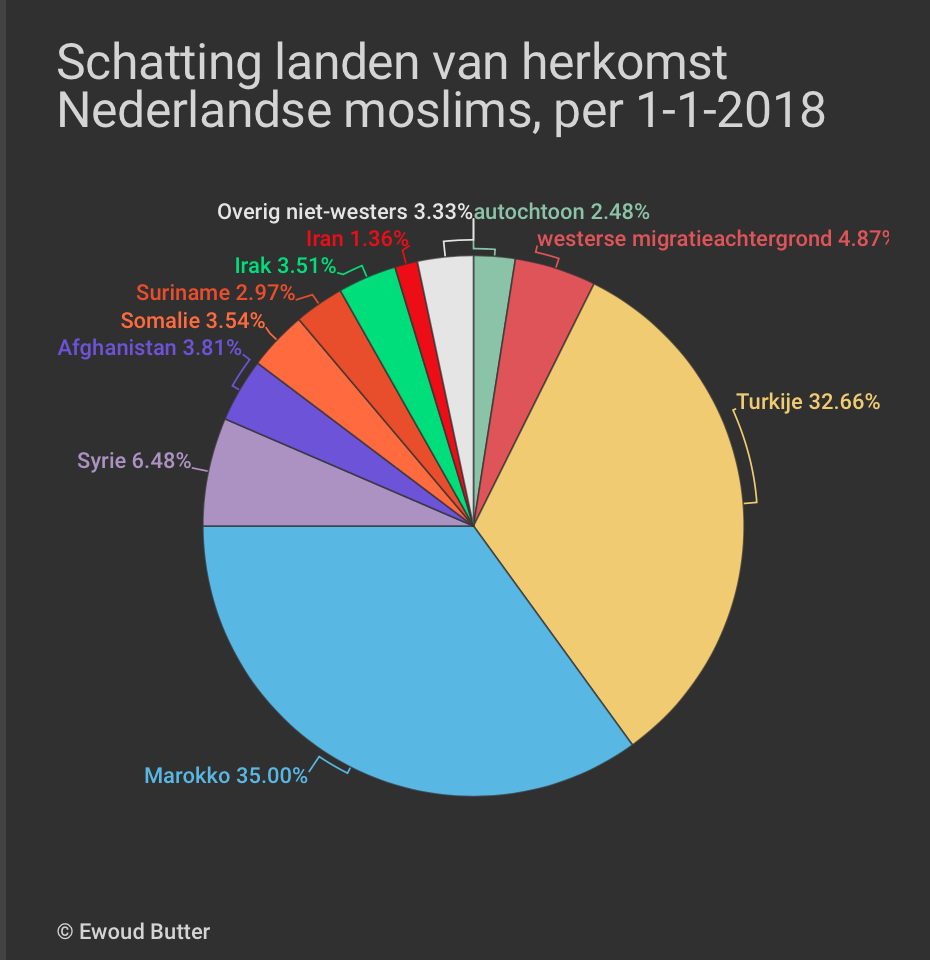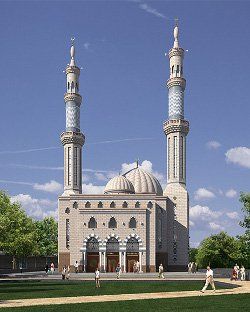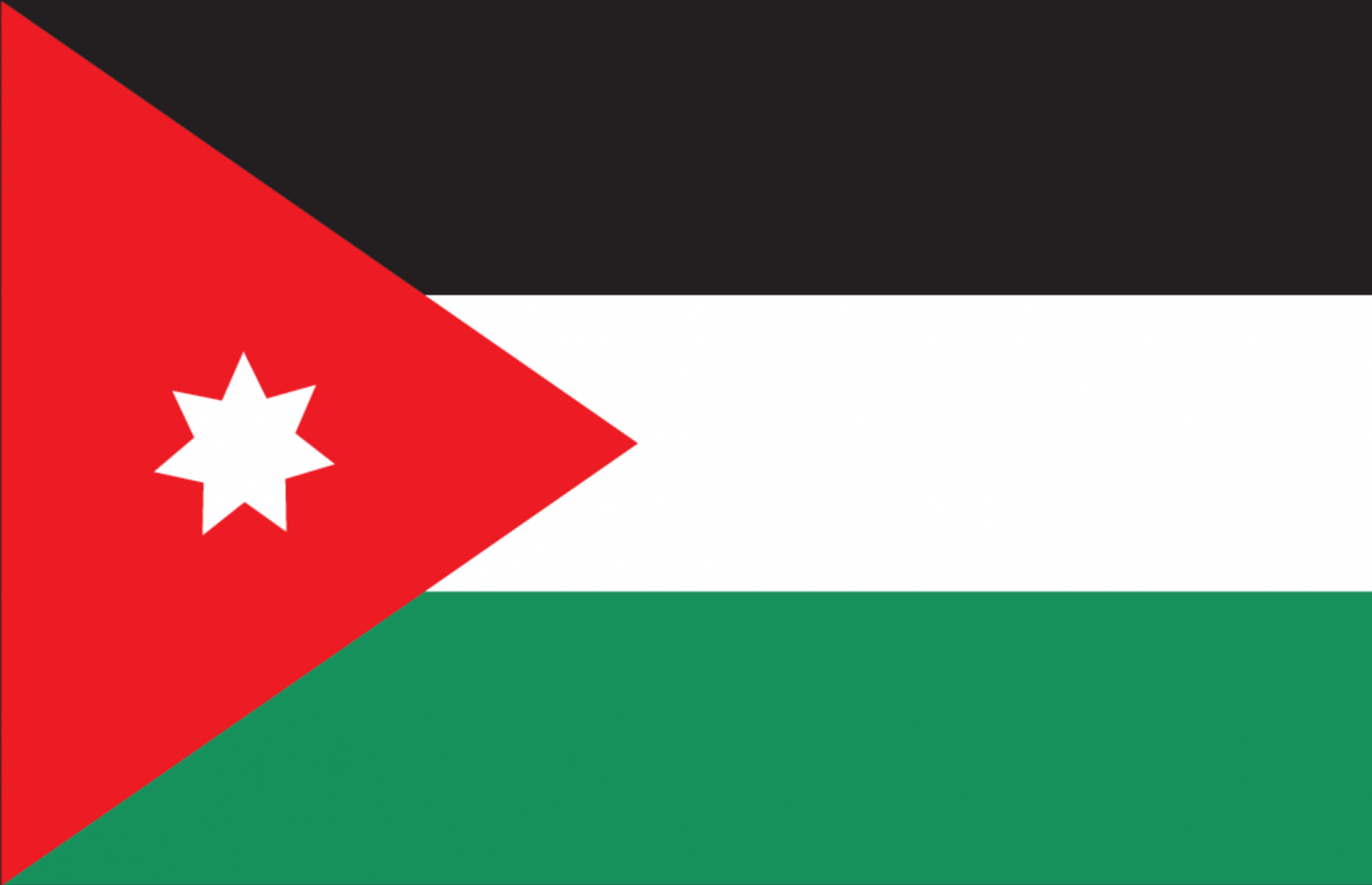ISLAM
Muslims in the Netherlands
-
Islam & Muslim
From the 17th century onwards, small numbers of Muslims came to the Netherlands from the Indonesian archipelago. In the Netherlands itself, Islam only became a significant movement in the second half of the 20th century. According to the CBS Labour Force Survey, an estimated 4.9% of residents aged 18 and over considered themselves Muslim in 2015; according to the SCP, which refers to the same study, the share of Muslims in the category aged 15 and over would be 6% and the percentage in the younger age categories is probably higher. This makes Islam the largest religion in the Netherlands after Christianity. In the 1960s, the first Turkish and Moroccan guest workers arrived, who founded their own mosques and requested time off on Islamic holidays. The Moroccan community built the first mosque in the Netherlands with the Al Kabir Mosque in Amsterdam. And then the Turkish community built the third mosque in the Netherlands with the Yunus Enre Mosque in Almelo. In 1963, the first reports of converted native Dutch people in the Netherlands itself came in, this involved an estimated 300 Dutch people. According to estimates, the number of converted native Dutch people in 2019 was around 21,000. In the 1960s, family reunification was legally regulated. In 2018, there were 52 Islamic primary schools and four secondary schools (the Islamic College Amsterdam since 2001 and the Islamic Scholengemeenschap Ibn Ghaldoun in Rotterdam since 2000, etc.). A study showed that there was demand for at least a hundred primary schools. Since the mid-1990s, there have been two (non-government-recognized) Islamic universities, while in 2005 there were at least four unofficial Islamic institutes of higher education. In 2020, there were 475 mosques in the Netherlands. In April 2018, the Turkish Aya Sofia Mosque was voted the most beautiful building in Amsterdam by Amsterdam residents.
-
Numbers
Until 2007, Statistics Netherlands (CBS) expected the number of Muslims in the Netherlands to pass the 1 million mark in 2006. It is estimated that there were 944,000 Muslims in the Netherlands at the end of 2004, of whom 6,000 were native Dutch. The number of non-native Muslims was estimated using the percentage of Muslims in the country of origin. In more recent estimates, which were drawn up on the basis of POLS surveys, Statistics Netherlands arrived at 877,000 Muslims in 2005 and 837,000 in 2006. The number of Muslims then fell further to around 825,000 in 2008. This is approximately 5% of the population. The fluctuations in the figures are probably related to the large reliability margins of the samples. It is not expected that there will be one million Muslims until 2022-2023. Estimates of the number of Muslims in 2050 vary, depending on the initial values and the migration scenario applied: in 2017, AtlasBridges considered a growth of up to 15% possible if refugee crises were to occur continuously. The general tenor of these studies is that the number of followers of Islam in the Netherlands is growing. Since 2015, Moroccan Muslims have formed the largest group within the Muslims in the Netherlands, with approximately 355,883 people, followed by Turkish Muslims with almost 325,000 people. Of the group 'other non-Western immigrants', Surinamese people form the largest group with 34,000 people, followed by Afghans with 31,000 and Iraqis with 27,000. The number of native followers of Islam was estimated by Statistics Netherlands in 2007 at approximately 12,000, but this number also includes third-generation immigrants.
| 2014 | 2020 | |
|---|---|---|
| 1. Turkey | 396.414 | 416.864 |
| 2. Morocco | 374.996 | 408.864 |
| 3. Syria | 13.744 | 105.440 |
| 4. Iraq | 54.159 | 64.653 |
| 5. Afghanistan | 43.183 | 50.403 |
| 6. Iran | 36.561 | 47.797 |
| 7. Somalia | 37.432 | 40.251 |
| 8. Egypt | 22.205 | 27.504 |
| 9. Pakistan | 20.653 | 25.050 |
| Total: | 999.347 | 1.186.826 |
Top 9 Muslim countries of origin. Source: CBS.
Islam & Muslims!

Top 9 Muslim Countries of Origin
Statistics Netherlands (CBS) shows that the number of residents with a non-Western migration background increased by 400,000 between 2015 and 2020. An increase of 20 percent. What does this mean for the number of Muslims in the Netherlands as a whole? Anyone who wants to know how many Muslims actually live in the Netherlands (approximately!) must first look at the number of residents with a non-Western migration background. In 2020, there were almost 2.4 million of them. They make up 13.7 percent of the Dutch population. In 2015, the Netherlands had 16.9 million residents. At that time, our country was on the eve of the great Syrian migration to Europe. In 2015, the Netherlands had two million residents with a non-Western migration background. They made up 11.8 percent of the Dutch population. Note that 11.8 percent. If you divide that percentage by two, you get 5.9 percent. That percentage represents one million people. The CBS estimated the number of Muslims in 2015 at 850,000, or 5 percent of the Dutch population. You could therefore conclude that if you take half of the number of residents with a non-Western migration background and reduce that by 150,000 (as a kind of margin of error), you have calculated the most realistic percentage of Muslims in the Netherlands.

Superdiversity is a concept that describes reality
As for the Dutch Muslim community, it has a great cultural wealth due to its great ethnic diversity. Dutch Muslims are also super diverse, which means that in addition to culture and ethnicity, they also differ in age, gender, degree and form of religiosity, political preference, education, social class. Dutch Muslims cannot therefore be captured in one category.

Replace the bulbs
Dutch Muslims are part of Dutch society, contribute in various areas and can be found in many layers and (sub)cultures of the population. About 5 to 7% of the Dutch population has a Muslim background, making Islam the second largest religion in the Netherlands (CBS, 2020; Pew Research Center, 2017). The Dutch Muslim community is culturally and ethnically very diverse. Most Dutch Muslims were born in the Netherlands (SCP, 2018). A large proportion of them have (fore)parents with a migration background. We also see diverse backgrounds here; some came as expats (labour migrants from mainly Turkey and Morocco), others have a decolonisation background (Indonesia and Suriname). Other Dutch Muslims had to flee (e.g. from Bosnia, Iraq, Syria, Afghanistan, Somalia, Iran, Palestine), and still others came to the Netherlands for study, work or love. Furthermore, there are also Muslims in the Netherlands with, for example, an Indian, Pakistani, Algerian, Tunisian, Sudanese, Egyptian, (native) Dutch or mixed background. Dutch Muslims also adhere to various religious (sub)currents or movements. The largest group of Dutch Muslims consists of Sunnis, but there are also Shiites, Alevites and Ahmadiyyas. Within and besides these there are all kinds of subcurrents, movements, interpretations and religious experiences, which can vary from very conservative to very liberal, in various aspects of faith and in various combinations. There are also Dutch Muslims who do not consider themselves to belong to any (sub)current and there are Dutch people for whom being Muslim is only a cultural element of their identity. In short, the Dutch Muslim cannot be captured in one category. This also applies to other religions in the Netherlands, such as Christianity and Judaism, which are also very diverse internally. And if we go back far enough in time, it turns out that the vast majority of Dutch people have a migration background. Migration stories remind us of a shared past, with fascinating and sometimes painful stories, and at the same time inspire us to believe in a positive shared future in the Netherlands.






























